
Swiss Water Decaffeinated Coffee Inc
TSX:SWP


| US |

|
Johnson & Johnson
NYSE:JNJ
|
Pharmaceuticals
|
| US |
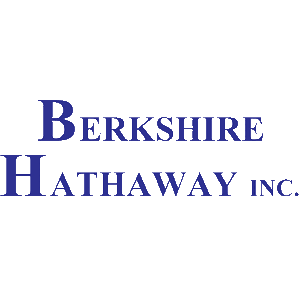
|
Berkshire Hathaway Inc
NYSE:BRK.A
|
Financial Services
|
| US |

|
Bank of America Corp
NYSE:BAC
|
Banking
|
| US |

|
Mastercard Inc
NYSE:MA
|
Technology
|
| US |

|
UnitedHealth Group Inc
NYSE:UNH
|
Health Care
|
| US |

|
Exxon Mobil Corp
NYSE:XOM
|
Energy
|
| US |
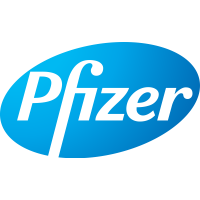
|
Pfizer Inc
NYSE:PFE
|
Pharmaceuticals
|
| US |

|
Palantir Technologies Inc
NYSE:PLTR
|
Technology
|
| US |

|
Nike Inc
NYSE:NKE
|
Textiles, Apparel & Luxury Goods
|
| US |
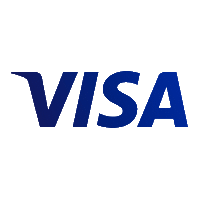
|
Visa Inc
NYSE:V
|
Technology
|
| CN |

|
Alibaba Group Holding Ltd
NYSE:BABA
|
Retail
|
| US |

|
JPMorgan Chase & Co
NYSE:JPM
|
Banking
|
| US |

|
Coca-Cola Co
NYSE:KO
|
Beverages
|
| US |

|
Walmart Inc
NYSE:WMT
|
Retail
|
| US |

|
Verizon Communications Inc
NYSE:VZ
|
Telecommunication
|
| US |

|
Chevron Corp
NYSE:CVX
|
Energy
|
We'll email you a reminder when the closing price reaches USD.
If you don’t study any companies, you have the same success buying stocks as you do in a poker game if you bet without looking at your cards.
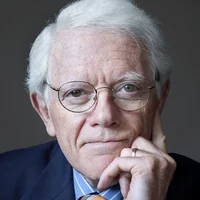
Utilize notes to systematically review your investment decisions. By reflecting on past outcomes, you can discern effective strategies and identify those that underperformed. This continuous feedback loop enables you to adapt and refine your approach, optimizing for future success.
Each note serves as a learning point, offering insights into your decision-making processes. Over time, you'll accumulate a personalized database of knowledge, enhancing your ability to make informed decisions quickly and effectively.
With a comprehensive record of your investment history at your fingertips, you can compare current opportunities against past experiences. This not only bolsters your confidence but also ensures that each decision is grounded in a well-documented rationale.
Do you really want to delete this note?
This action cannot be undone.

| 52 Week Range |
2.9
4.79
|
| Price Target |
|
We'll email you a reminder when the closing price reaches CAD.
Choose the stock you wish to monitor with a price alert.

|
Johnson & Johnson
NYSE:JNJ
|
US |

|
Berkshire Hathaway Inc
NYSE:BRK.A
|
US |

|
Bank of America Corp
NYSE:BAC
|
US |

|
Mastercard Inc
NYSE:MA
|
US |

|
UnitedHealth Group Inc
NYSE:UNH
|
US |

|
Exxon Mobil Corp
NYSE:XOM
|
US |

|
Pfizer Inc
NYSE:PFE
|
US |

|
Palantir Technologies Inc
NYSE:PLTR
|
US |

|
Nike Inc
NYSE:NKE
|
US |

|
Visa Inc
NYSE:V
|
US |

|
Alibaba Group Holding Ltd
NYSE:BABA
|
CN |

|
JPMorgan Chase & Co
NYSE:JPM
|
US |

|
Coca-Cola Co
NYSE:KO
|
US |

|
Walmart Inc
NYSE:WMT
|
US |

|
Verizon Communications Inc
NYSE:VZ
|
US |

|
Chevron Corp
NYSE:CVX
|
US |
This alert will be permanently deleted.


























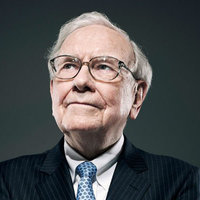
Good afternoon, ladies and gentlemen. Before the Swiss Water Decaffeinated Coffee conference starts, they are required to remind you that certain information in today's presentation is forward-looking in nature. Any such forward-looking information or statements are based on assumptions that they are considered reasonable at the time the information was prepared. Such information involves known and unknown risks, uncertainties and other factors outside their control that could cause the actual results to differ materially from those expressed in the forward-looking information. Swiss Water Decaffeinated Coffee does not assume responsibility for the accuracy and completeness of forward-looking information. Similarly, they do not undertake any obligation to publicly revise this forward-looking information to reflect subsequent events or circumstances, except as required by law. Please refer to the Swiss Water Decaffeinated Coffees Management Discussion and Analysis posted on SEDAR and Swiss Water's website for a full discussion regarding the forward-looking statements and risks therein. [Operator Instructions] It is now my pleasure to turn the floor over to your host, Frank Dennis, President and CEO of Swiss Water Decaffeinated Coffee. Sir, the floor is yours.
Thank you, Matthew. Good morning, everyone, and thanks for taking the time to join us. I'm Frank Dennis, President and CEO of Swiss Water Decaffeinated Coffee Inc. And with me today is Iain Carswell, our CFO. Iain and I are here today to discuss Swiss Water's financial results for the 3 and 9 months ended September 30, 2021. As always, I'll begin with a brief review of our performance, and then Iain will provide more detail about our financial results before I return to tell you more about our longer-term plans and expectations. After that, we'll be happy to take your questions. If you've read yesterday's press release and reviewed our quarterly MD&A, you will already know that SWISS WATER achieved record volumes and reported record adjusted EBITDA in the third quarter and first 9 months of this year despite the lingering impacts of the COVID-19 pandemic and logistical issues. This strong performance resulted from the combination of a number of positive factors. The first and foremost and most important of these is the recovery of demand from the vital out-of-home coffee market as the North American and international foodservice economies continued their return to normal. The second is that as cafes, restaurants and retail grocery outlets in our key markets adapt to increasing environmental responsibility and food safety requirements, coffee roasters and coffee consumers are increasingly choosing chemical-free water process decaf over coffee decaffeinated with methylene chloride or ethyl acetate. Result is clearly visible in our total volumes, which were up 29% in the second quarter and grew by 15% in the first 9 months of this year. Meeting this demand enabled us to achieve a high level of capacity utilization from all 3 of our current production lines over 85% during the quarter. This, in turn, enabled us to achieve very strong profitability and, in particular, to post adjusted EBITDA for the quarter of $4.0 million, triple the amount for Q3 of last year. 9-month adjusted EBITDA was also up significantly, growing by 44% to $8.4 million and already surpassing 2020 full year adjusted EBITDA. While the volume growth was notable in all of our geographic markets, with many of our customers ordering on par or even ahead of pre-pandemic levels, Europe stood out, once again, posting an 84% increase over the first 9 months of 2020. Business in the Asia Pacific region was also very strong, with volumes up 23% for the year-to-date, mainly due to organic customer growth. And in our largest market, North America, volumes were up 17% in Q3 and by 10% in the first 9 months of the year. As I've noted before, we see the strong recovery of demand in our international markets as a positive leading indicator of what is unfolding in North America as the food service economy reopens and business returns to more normal trading patterns and as food safety issues become more prominent. Importantly, we see the positive changes in our customer mix as a clear sign of a strong recovery in the vitally important out-of-home coffee market. While at the same time, at-home consumption has remained buoyant. The relaxing of restrictions on food service outlets in the U.S. and elsewhere, helped us increase volumes, [ shift ] to our higher-margin specialty accounts by 21% in the third quarter and 23% in the first 9 months of this year. What's unusual is that we've achieved this exceptional volume growth across the business in an environment of ever-increasing coffee futures prices. For comparison, the NYC coffee futures price averaged USD 1.80 in Q3, up nearly 60% from USD 1.14 in the third quarter of last year. By the end of September, the NYC had hit USD 2, and it closed yesterday at USD 2.11. Normally, when the NYC is rising like this, our customers tend to consume their own inventories rather than buy more coffee as they wait for the price to fall back. However, this year, an unusual double for us in Brazil, together with the widespread disruption of global supply chains have created a growing fear of looming coffee shortage among industry participants at all levels. This concern has helped support our volume growth and may even have caused some customers to move their orders forward to ensure that they have sufficient inventory on hand to meet demand. Over the coming weeks and months, we will see how this plays out. Before I tell you more about our outlook for the balance of the year and our preparations for the future, let me now turn the call over to Iain to take you through our financial results.
Thanks, Frank. Good morning, everyone. As always, I'll begin my review with volume shipped to customers as this is the key metric that drives our financial performance. As Frank indicated, Swiss Water's processing volumes set a new quarterly record in the 3 months to September 30, primarily as a result of the ongoing recovery of the foodservice economy. Total volumes were up by 29% in the second -- in the third quarter and by 15% for the year-to-date when compared to the same periods last year. Looking at volumes by customer type, shipments by roasters, those customers who roast and package coffee to sell to consumers in their own coffee shops or for home or office consumption rebounded nicely, growing by 14% in the quarter and 3% in the first 9 months of this year. Shipments to importers, those customers who resell our coffees to roasters where and when they need it, were up much more, growing by 49% in Q3 and by 43% in the first 9 months of this year. Looking at the roaster segment another way. As Frank noted, specialty roaster account volumes continue to trend upward, growing by a healthy 21% in the quarter and by 23% for the year-to-date. These accounts serve the out-of-home consumer primarily, and the strong growth here reflects the reopening of cafes and restaurants in a number of our key geographic markets. Shipments to large commercial roasters, we serve the grocery market principally. We're also well up, growing by 34% in the quarter and by 11% for the first 9 months of this year. Turning now to revenues. Third quarter revenue of $35.5 million was up by $10.6 million or 43% from Q3 of 2020. Year-to-date revenue of $89.9 million was also very strong increasing by $16.9 million or 23% for last year's level. The revenue increase in both periods was due to the growth in our volumes as well as this year's significantly higher green coffee price. Looking at the cost side, our third quarter cost of sales was $29.5 million, an increase of $8 million or 38% compared to Q3 of last year. For the year-to-date, cost of sales was $76.7 million, up $16.5 million or [ 27% ] from the 2020 level. The increase in both periods was mainly driven by higher green coffee costs and our significantly increased production volumes as well as by increased depreciation due to the inclusion of our new Delta manufacturing facility and incremental labor and production expenses. As Frank noted, the NYC coffee commodity price has been trending sharply upward, hitting an average of $1.80 in Q3 versus $1.14 in the third quarter last year and approximately $1.20 at the beginning of January this year. As you would expect, such a significant rise in coffee prices triggers a major increase in our working capital needs and the increased value of inventory in our balance sheet is reflective of this. While the additional depreciation and amortization expenses from the Delta facility and finance lease totaled $1 million for the quarter and $2.7 million for the first 9 months of this year. Third quarter gross profit was $6 million, an increase of $2.6 million or 75% compared to Q3 of 2020. For the 9 months to September 30 this year, gross profit was $13.2 million, up by $400,000 or 3% from the same period last year. The improvement in gross profit was primarily driven by the record processing volumes we put through our facilities during the third quarter. By utilizing our 3 production lines at over 85% of capacity, we were able to realize significant production efficiencies in January to higher differential margin. These 2 factors comfortably offset the increase in depreciation charges and incremental labor and production expenses following the commissioning of Line 1 at our new Delta facility. Third quarter operating expenses were $2.7 million, down by $100,000 from Q3 of last year. For the year-to-date, operating expenses were $8 million, down by $300,000 from the first 9 months of last year. The administrative portion of operating expenses was up by 15% in the quarter and by 14% for the 9 months due to the absence of a cost recovery of share-based compensation this year compared to 2020. However, the sales and marketing component was down sufficiently to offset this increase due to timing differences in advertising and marketing activities and the restructuring of the related department. Q3 operating income was $3.3 million, up significantly from the $600,000 recorded in the third quarter of 2020. Year-to-date operating income was $5.2 million compared to $5 million for the first 9 months of last year. Net income for the quarter was $135,000 compared to income of $106,000 in Q3 2020. For the year-to-date, net income was $255,000 compared to $3.3 million last year. The decline in net income was driven by a variety of factors. These included the negative impact of mark-to-market changes in foreign currency exchange rates and future's market activities, and increased depreciation expense as well as the increased costs associated with operating at 2 locations this year. Once we consolidate all production at our Delta location, exit the legacy Burnaby facility in mid-2023, the resulting efficiencies will bring down our operating costs significantly. Higher nonoperating expenses also had an impact. Nonoperating expenses were higher for the quarter and first 9 months of this year due to an increase in finance costs in both our construction loan and credit facility. Third quarter net finance expense of $1 million were up by $300,000 over Q3 of last year. For the year-to-date, net finance cost was $2.8 million, an increase of $1.1 million compared to the 2020 level. Importantly, in 2020, during the construction of Delta Line 1, borrowing costs related to this project were capitalized. Following its commissioning in Q3 last year, the related borrowing costs started to be recognized as an expense. Another factor contributing to this year's increased nonoperating expenses is that last year, our first half nonoperating expenses were reduced by the revaluation of an embedded derivative as a result of a lower share price, offset by a slight loss in our risk management activities. During the same period this year, there was a much smaller revaluation effect and a significant increase in finance expense. I should also note that during the third quarter this year, we restructured our debt by amending our convertible debenture with Mill Road Capital into a debenture with warrants. This resulted in a onetime noncash loss on the extinguishment of the convertible debenture being booked in Q3. Despite the additional cost burdens on the company this year, we achieved a significant improvement in adjusted EBITDA. As Frank noted, third quarter adjusted EBITDA of $4 million was triple the $1.3 million we reported in Q3 last year. And for the year-to-date, adjusted EBITDA of $8.4 million was up significantly from $5.9 million in 2020. Operationally, our adjusted EBITDA improvement this year was driven by volume growth, efficiency gains resulting from our higher capacity utilization and an increased financial contribution from our Seaforth coffee handling subsidiary. As I've noted, these positive impacts were partially offset by the higher green coffee costs we have experienced so far this year. With that, I thank you for your attention, and I'll now turn things back to Frank.
Thank you, Iain. As Iain and I have indicated, we are very encouraged by the record volumes we achieved in the third quarter. This was built upon the positive trend that has emerged since the beginning of the year as the food service economy continues to return to more normal operations and the decline of methylene chloride decaffeination continues. However, we do know that there have been some significant alterations to roaster order patterns and the NYC future's market is at sustained high levels. Both of these factors could have an effect on early 2022 volumes. Although looking into the balance of this year, we have a strong order book, and that includes going into Q1, and our production facilities are running very smoothly. The high capacity utilization we achieved on all 3 decaffeination lines and that our [ C4 ] subsidiary during the third quarter drove solid profitability and gave us a clear view of what can be achieved in the future. That said, some caution continues to be called for. COVID-19 pandemic is not over, and although we may be learning to live with it, at least in the developed world, further disruptions may well occur. One unfortunate side effect of the economic recovery now underway is the disruption of global supply chains. In our case, we are experiencing logistical challenges and moving coffee from growing regions to our production facilities and then on to markets, both in North America and internationally. This is being felt very acutely at the Port of Vancouver. As I noted earlier, a frost in Brazil during July and nearby inventory tightness has driven a sharp rise in the coffee future's price. High coffee prices can also have a destabilizing impact on the efficient movement of coffee inventories. They certainly put an additional pressure on our working capital resources. Like most businesses, we are experiencing inflationary pressure on many of our other cost inputs from natural gas, to packaging, to freight and to labor. While we always approach our pricing strategy with caution, we may very well have to implement processing price increases in the very near future. Operationally, we continue to run both decaffeination lines at our legacy production facility in Burnaby, BC on a 24/7 basis. The initial line at our new facility in Delta, BC operated smoothly and efficiently, also, on a 24/7 basis throughout the first 9 months, and we are continuing to migrate more of our production here. As we move through the balance of the year, we expect to gradually increase the processing speed of Delta Line 1 as we work to optimize and maximize its production. If you've been following our story, you'll know that we must relocate all remaining production from Burnaby by June 2023 to Delta due to the upcoming expiry of our lease there.Accordingly, in order to ensure that our ability to deliver on customer orders is uninterrupted and to meet the growth in demand we see ahead, we are in the process of building a second new production line in Delta. Financing for the project was [ a ] range in Q2 of this year, and the necessary permits were secured over the summer. The foundation has now been completed, and we expect to begin above ground construction this month. The project is currently on time and on budget toward a targeted completion date before the 2023 lease expiry in Burnaby. As I've noted before, based on engineering reports from a third-party engineering firm, when both lines are completed, we expect the 2 new lines in Delta, together, will have a targeted end capacity at least 40% greater than the current Burnaby facility. The preliminary cost estimate for design and construction of the Line 2 project in Delta is approximately $45 million plus commissioning costs of around $2 million. These estimates are preliminary and like all major design and construction projects are dependent on [ local ] and economic factors. That wraps up our comments for today. Iain and I would now be happy to answer any questions that you might have.
[Operator Instructions] There are no questions in the queue at this time.
Well, then if there are no questions today, then I will conclude today's call. And I wish you all good health, and thank you very much for joining us.
Thank you, ladies and gentlemen. This concludes today's event. You may disconnect at this time, and have a wonderful day. Thank you for your participation.
Thank you.